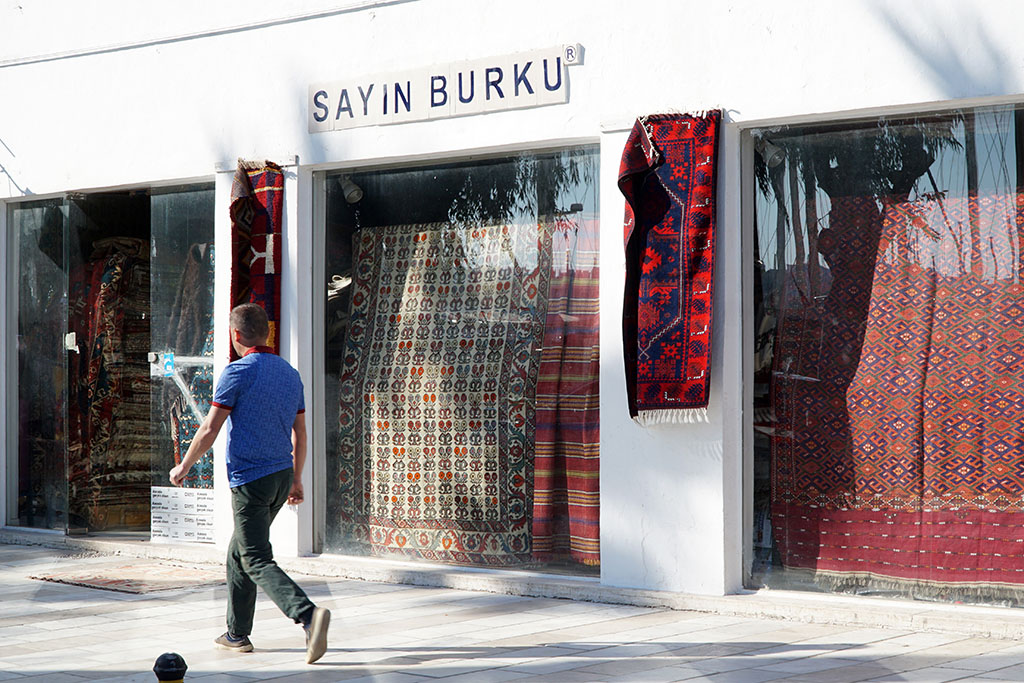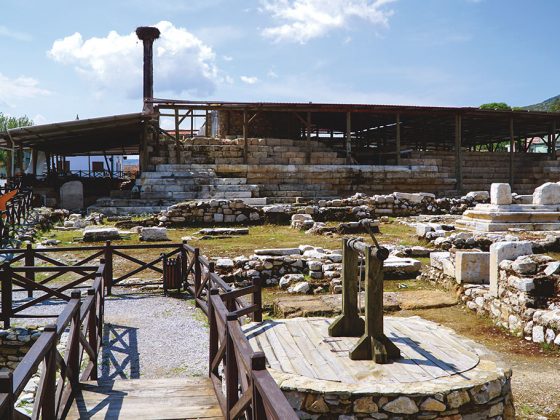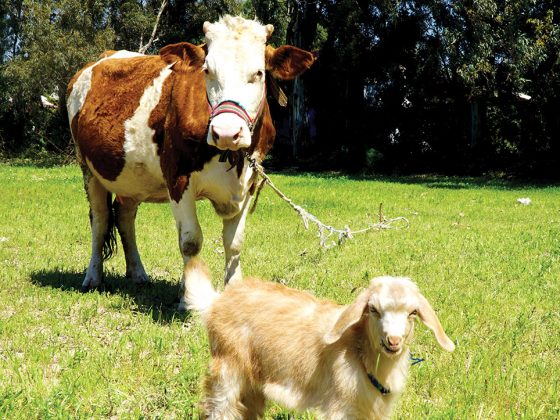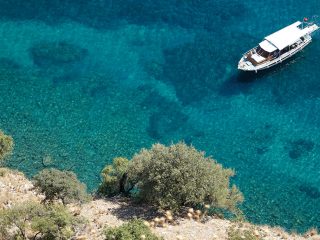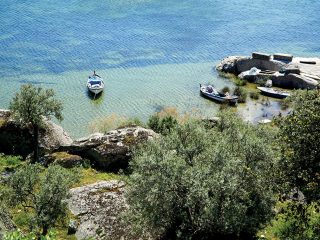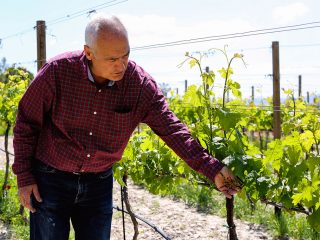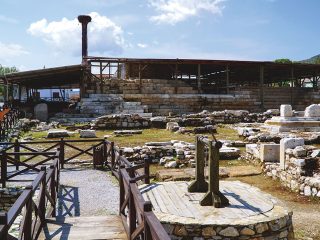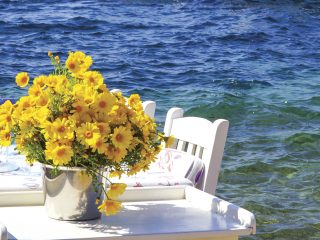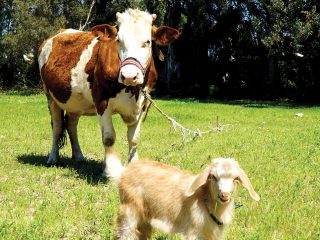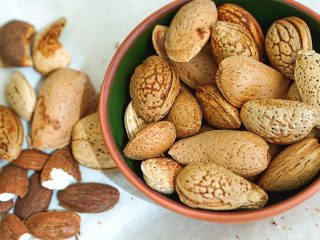The Milas carpet holds a humble but distinctive place in the rich culture of handwoven carpets and kilims of Turkey.
By Chris Drum Berkaya
Photos by Merve Göral & Marzena Romanowska
Seeking the story of Milas carpets and the rarer Milas kilims leads us to the men who sell and trade in them, the few women who did or still can make them, and to a brand new museum collating the breadth and range of the textiles which proudly carry the now registered brand “Milas.”
A day at the museum
To get an overview of Turkish and Milas carpets, there is no better place to start than at the small and very new Milas Carpet Museum, located in a restored early 20th century Milas style house on the grounds of the Uzunyuva Arkeopark. The Museum introduces visitors to academically researched displays about Milas Carpets and provides background on all Turkish Carpets made with the distinctive “Turkish dügümü,” also known as the Gordes knot, which is the double knot applied to the traditional wool warp and weft and that which distinguishes them from those with the Persian knot. The origins of these carpets began in Central Asia or Serbia, and along paths traveled from there by the nomadic Yoruk and Turkmen tribes. They carried their crafts and skills, some all the way to where they settled the remote area of villages between Milas and the Gulf of Gokova. The village names which resonate in the carpet world: Bozalan, Karacahisar, Bayır, Mazı, Çömlekçi, Sazköy, Etrim, Pınarlıbelen, Kayaönü, Alatepe, and Gökbel give their names to carpets typical of their valleys. The process used for extracting the natural dyes from the local herbs and roots which give the earthy colors and tones that are very characteristic of Milas carpets is best laid out in the museum’s children’s section, as are the motifs used as a symbolic language by the anonymous women artists weaving the carpets. Some of these symbols are universal in all woven carpets and some are very local with odd names like the snake, the island, crow’s foot, dog trace, hand on waist, trapezoid saw, and the tree of life. The most characteristic attribute in a Milas carpet are the narrow borders filled with patterns, and the smaller central “field.” The museum has beautiful, authenticated vintage examples of carpets best representing each village area and style, and a video available in English and Turkish that should not be missed.
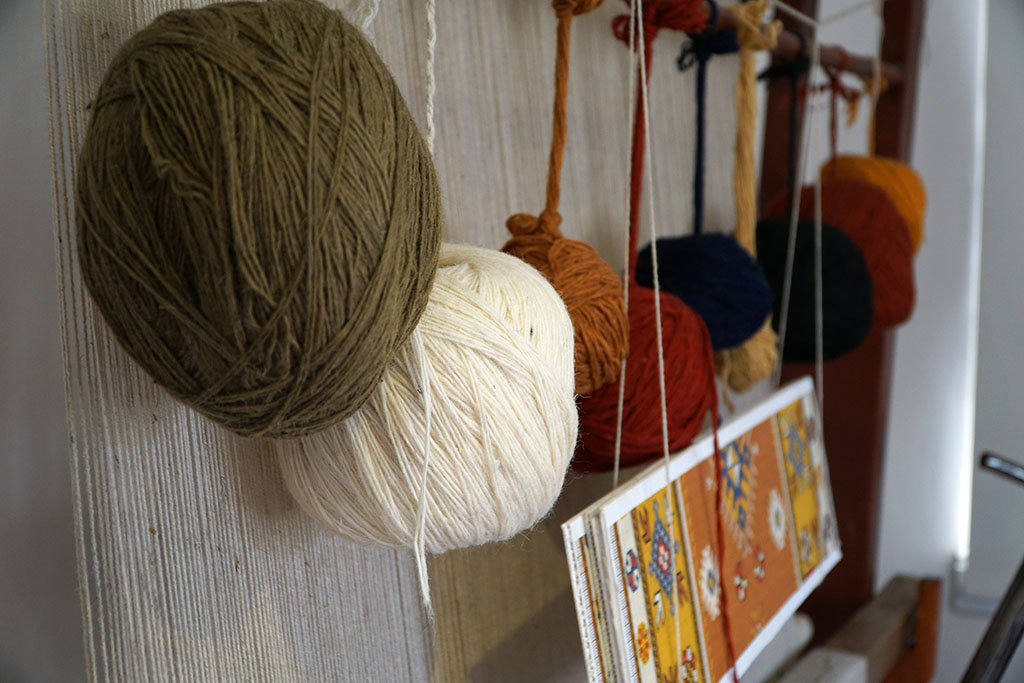
The last carpet trader in Milas
Being the last carpet trader in Milas, the town center of a region famous for its carpets, is an irony not lost on Hasan Ölmez. His tiny shop, inherited from his father, is now jammed between glossy storefronts offering 21st century technology, the last of the many traditional carpet traders that used to populate the old town center. Hasan came back to Milas after spending his youth representing Turkey in wrestling competitions. Photos of his wrestling triumphs adorn what space can be found between piles of folded carpets and kilims hanging from hooks and rails in the shop. It is a tight squeeze to make one’s way between piles of folded carpets near the door, but once inside, Hasan expertly walks visitors through the carpet buying process, highlighting the differences in quality and color of carpets made by both traditional and more modern techniques. Hasan’s shop contains a rainbow of colors and patterns of carpets and kilims of all origins, but be sure to not miss the beautiful range of Milas carpets.
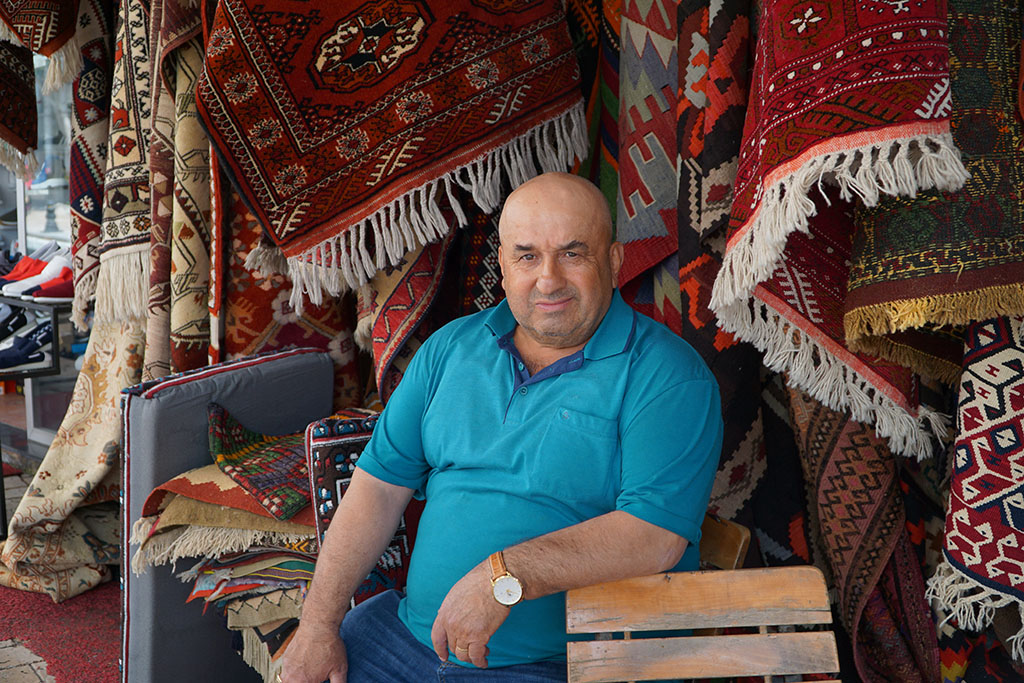
Preserving tradition in Sazköy
Osman Koca shares a wealth of information about carpets, particularly about Milas carpets and traditions, in person and on his website. There he includes a famous 1890 painting by Osman Hamdi Bey, the founder of the Ottoman Archaeological Museum in Istanbul, titled Two Young Girls Visiting a Shrine, which clearly shows a Milas carpet draped from the pedestal. It is a classical “prayer niche” Milas carpet, typical of original 16th century prayer carpets, with a rectangular niche, or mihrâb, in the central panel that helped align the carpet for prayers towards Mecca. The wealth of Osman’s personal knowledge is matched only by his comprehensive collection of carpets and kilims from all over Anatolia, displayed for visitors in two galleries beside his home in the tiny one-café village of Sazköy in the Karaova valley outside Mumcular. Why Sazköy? His family has been farming here for centuries, with Osman having grown up amongst women who wove carpets between home making and farming. He wants to preserve their traditions, as he knows they are descended from the original nomads, likely Turkmen, who moved westward across Anatolia with their sheep and camels until they came to the picturesque and well-watered Karaova valley. Saz means reeds, and Osman believes these nomads first wove their yurt-like homes using reeds from the creek, draping and furnishing them with the kilims and carpets that had travelled with them. His wife, Emine, though not a carpet weaver, provides delicious food for visitors and also offers short lessons in culinary arts.
A fading tradition in Mumcular
Niyazi is a tall, imposing figure in his Mumcular carpet shop, one of eight along the main street of the dusty agricultural town, rapidly changing into a dormitory suburb for Bodrum. Men like Niyazi, who displays his bright orange Mumcular scarf on the wall when it is not worn with swagger at the annual men’s camel and oil wrestling contests, have long been a staple of this country. Niyazi and his two brothers ran the famous Çengel carpet shop at the entrance of Bodrum harbor in the early years of tourism, before returning to their hometown of Mumcular. Known and respected for his eagle eye for dyes and weave in carpets of real value and vintage, his shop contains Milas carpets of various ages and styles, from an astonishing 100 year old red carpet from Fethiye, to the unique colors and motifs of 50 year old Milas carpets. Sadly, he says it is becoming difficult to find the older carpets which were traditionally made in village homes, as there are no women left in the area making carpets full-time. “They want a wage and social insurance, and the return from their carpet is a fraction of that,” he states.
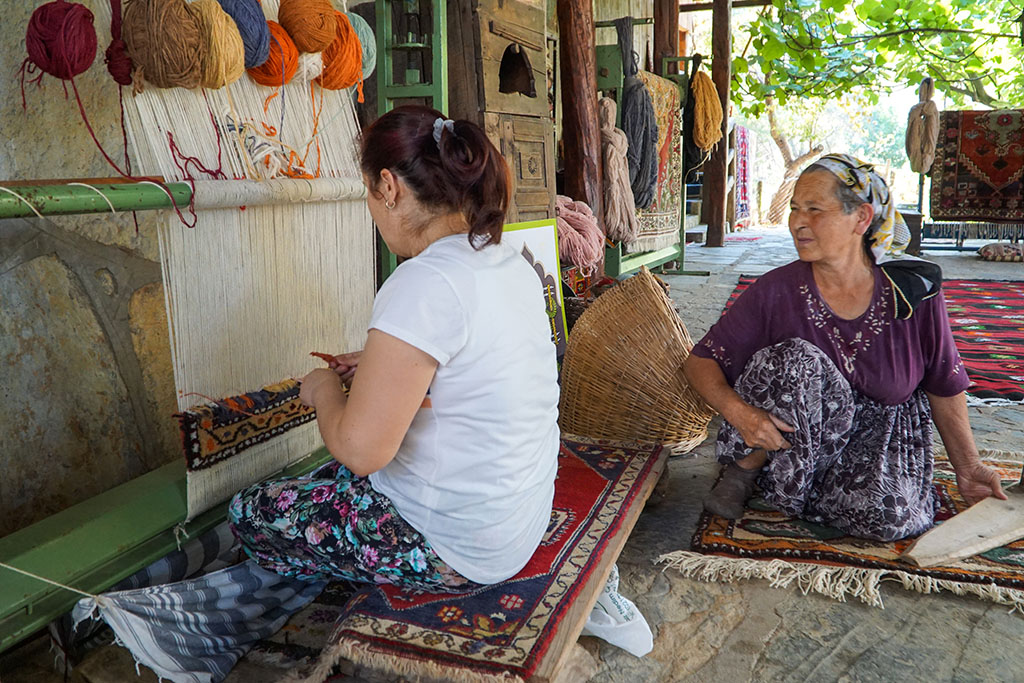
A village escape from the beaches and hotels
The Başol family have put Etrim village firmly on the map for many visitors to Bodrum looking for an alternative to beaches and hotels. Having learned carpet making from her mother, Ümmühan has made carpets since she was six years old. Having gently entered the tourism industry with her husband Mehmet by offering visitors a village breakfast and a glimpse of village life through tours of village homes, the café, and mosque, they found visitors were particularly drawn to their carpets. Descended from 300 years of settlers in the valley, both were born and grew up in the village. At first, they collected carpets from the surrounding villages to sell on their behalf, but, as Mehmet’s expertise grew, he ranged further across Anatolia to acquire a broader range of carpets and kilims. The couple has now built rooms with a balcony where visitors can admire the various carpets and kilims while tasting Ümmühan’s delicious food. Their daughter, Belgin, runs a popular restaurant in the orchard while their son, Engin, manages the carpet trading.
Notably, Engin is actively making plans to sustain the agriculture and traditions of the Karaova valley. “I have a dream,” he said, “of founding a nomadic life and agricultural traditions museum here in Etrim. If we don’t do something soon, we will lose every memory and knowledge of the old ways.” As the younger generation leave or commute to paid work in Bodrum, they give up back-breaking farming and traditional crafts like carpet making. “I love the antique carpets of Milas and add to my collection when I find them, rare as they are. If they can go to a good home and owner, I might sell them on, but very reluctantly!” Engin now has a huge collection of Turkish carpets, kilims, traditional kilim bags, and embroidery. Roughly 40 percent of the collection is Milas style carpets, understanding that visitors prefer to look through a range of colors and origins. Engin explains, “I want to continue to give visitors the experience of village life, which is the origin of our carpets. We walk around the village first, then demonstrate the work that goes into making a carpet, through the carding of sheep wool, the spinning, dyeing with natural sources, the actual loom work and how the Turkish double knot makes up a carpet, the designs, and motifs.” Unfortunately, “it is true,” he says, noting ”that most carpet wools and carpets are now prepared inland around Isparta or in eastern Turkey where sheep are still run, as there are very few in this valley now. Therefore, we have to preserve the knowledge and techniques we have.”
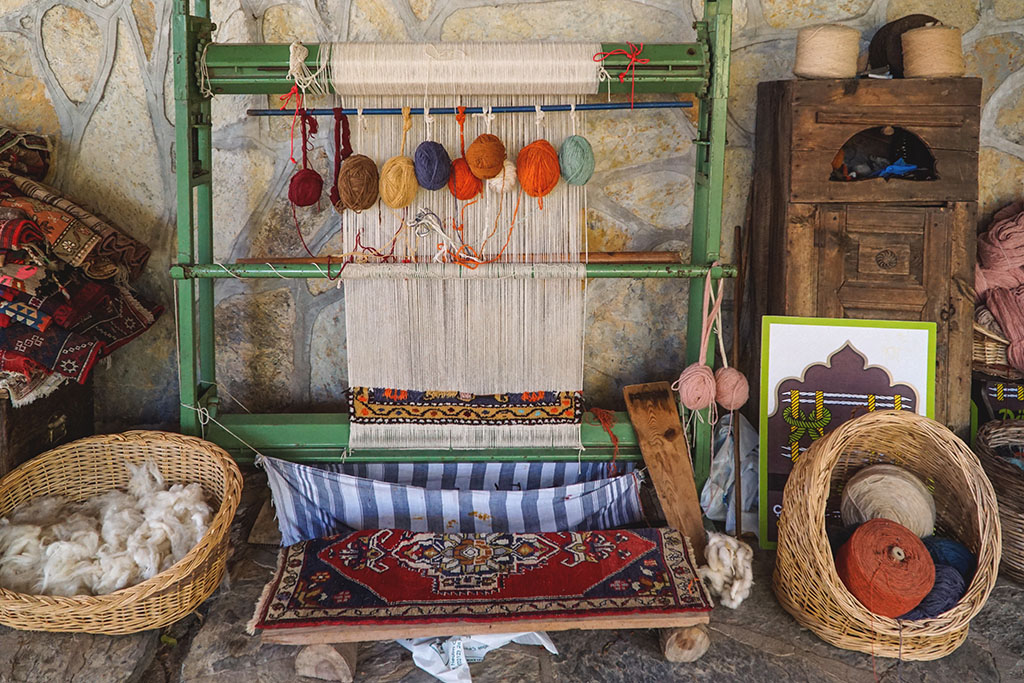
The harbor front carpet dealer
Sayın Burku can’t be missed on a stroll down the Bodrum harbor front where he runs the only carpet shop. Dramatic displays of carpets and kilims adorn the windows, spilling out of the doorways, hinting at the packed-to-the-ceiling bounty inside. “Ah, but I have more out the back,” he notes, where, actually, he has even more. Having studied carpets nearly everywhere, from the Istanbul Carpet Museum to Anatolian villages in his 30 years of trading, Sayın now has 39 workshops around Turkey with over 300 people making replica carpets, based on traditional patterns. Sayın proudly points to a photograph of a carpet that he supplied that covers the floor of a vast hall in a Kuwaiti palace, while opening a folder overflowing with carpet designs showing the variety of custom made carpets he makes possible for the right customer. Even in this small space he can also pull out a vintage carpet, or twenty, from one of the towering piles to suit anyone’s taste. “I love my job. I know carpets,” he says, “A good carpet is a good carpet. I don’t prefer Milas carpets over other carpets or kilims.”
A family affair
Ercan Açikel is the eldest of five brothers and two daughters, whose father came to Bodrum from Niğde via Ankara, as the story goes, with a carpet over his shoulder. Then, there was one carpet seller in Bodrum in the early 70s, and Şakir Açikel swiftly became the second. Sixty years later, Ercan, Mustafa and Ibrahim Açikel each have their own carpet shops within the center of old Bodrum. Each shop is immaculately arranged, displaying beautiful collections to entertain their customers and regular visitors, amongst them international stars, actors, and musicians, who often return to the shop sure to find another carpet or kilim from the many regions of Turkey. Ibrahim, the youngest of the three, claims to have the best selection of Milas area carpets of the brothers in his shop nearest to harbor square, opposite the McDonald’s. Inside the shop a welcoming, calm atmosphere prevails where, with the traditional glass of tea in hand, Ibrahim discusses his carpets with visitors in a measured exploration of symbols, motifs and colors. The carpets are laid out one after the other to build vivid glowing piles of color, enticing visitors to take home their own small piece of Anatolian history.
